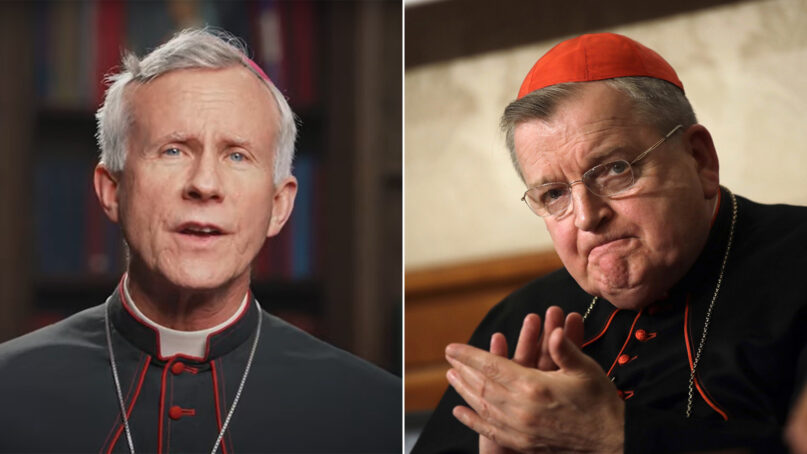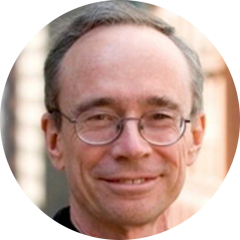(RNS) — Pope Francis’ recent moves against two prominent conservative American churchmen, Cardinal Raymond Burke and Texas Bishop Joseph Strickland, raise questions about the authority of the pope to fire or remove a bishop.
Both men have made clear their disagreement with Francis’ policies. Most recently, Burke said in a panel discussion in Rome as the Synod on Synodality got underway that the global gathering of bishops and laypeople at the Vatican risked “confusion, error and division” among the faithful. In May, Strickland went so far as to accuse the pope in a tweet of “undermining the Deposit of Faith” — the body of Scripture and tradition that make up Catholic belief.
On Nov. 10, Francis removed Strickland as bishop of Tyler, Texas, and days later it was reported that the pope would take away Burke’s pay and his free apartment.
It’s likely that those who agree with Francis and his policies will think he was perfectly right in disciplining Burke and Strickland. Those who do not will tend to see the moves as an abuse of authority.
I would ask both sides to perform a simple exercise. What would you think if it were Pope John Paul II who was acting against bishops who had said and done similar things against him? Here, many liberal Catholics would be outraged at the pope’s actions, while conservative Catholics would cheer him on.
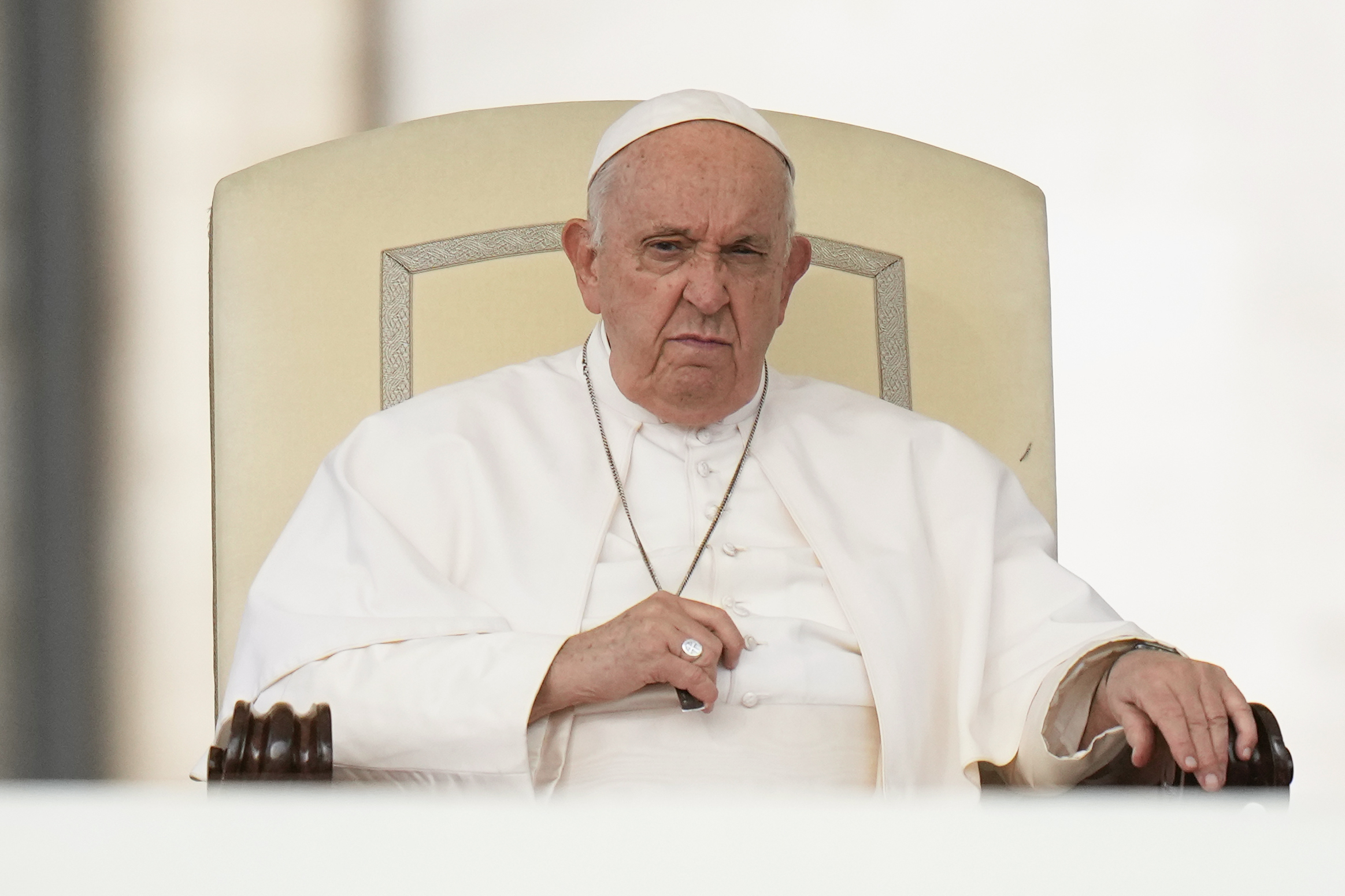
Pope Francis during his weekly general audience in St. Peter’s Square at the Vatican, on Oct. 18, 2023. (AP Photo/Alessandra Tarantino, File)
Similarly, when John Paul was in office, liberal Catholics supported independent bishops and strong conferences of bishops while conservatives emphasized papal primacy. Now that Francis is pope, conservatives have suddenly discovered the importance of bishops’ conferences and praise independent bishops, while liberals are calling on bishops to be loyal to the pope.
This dynamic is familiar from our national politics. When one’s favored party holds power in Washington, the supremacy of the federal government becomes paramount. When that party is out of power, state rights suddenly become important.
In other words, both sides, whether in politics or the church, are less principled than they claim. We support whatever position helps our side achieve its goals.
So, how should we think about these two cases?
First, the two cases are very different. One involves a diocesan bishop, the other a cardinal archbishop working in the Vatican.
The Second Vatican Council emphasized the importance of diocesan bishops to the point that they are referred to as vicars of Christ in their dioceses. They are successors of the apostles and members of the college of bishops under the leadership of the pope. They are not branch managers under a papal CEO who can fire them at will.
A pope cannot simply remove every bishop with whom he has a disagreement. If that were the case, both John Paul and Francis would have decimated the American hierarchy at the beginning of their papacies.
Normally, episcopal leadership only changes when a bishop turns 75 or dies. John Paul and Benedict were able to remake the post-Vatican II church because together they had 35 years to remake the episcopacy in their image. Francis, after a 10-year reign, has had only a limited impact, and many of his opponents will outlive him.
Historically, the removal of a diocesan bishop has been very rare. More frequently, though still rarely, when faced with papal disapproval, bishops have resigned. Most of the recent cases have been bishops who failed to protect children from bad priests. Others who resigned were involved in sexual or financial improprieties.
This did not stop John Paul and Benedict from removing bishops. Benedict sacked Australian Bishop William Morris of the Diocese of Toowoomba in 2011 after Morris suggested in a pastoral letter that ordaining married men and women may become a necessity. “We may well need to be much more open towards other options [than celibate men] for ensuring that Eucharist may be celebrated,” he wrote.
In 1995, John Paul removed Bishop Jacques Gaillot of the Diocese of Evreux, Normandy, France, who also supported ordaining married men. He was accused of failing to exercise “the ministry of unity.”
Liberal Catholics condemned these removals. Note that neither of these bishops threatened to ordain married men or women. They were removed for simply bringing up the idea. They were never disrespectful toward the pope.
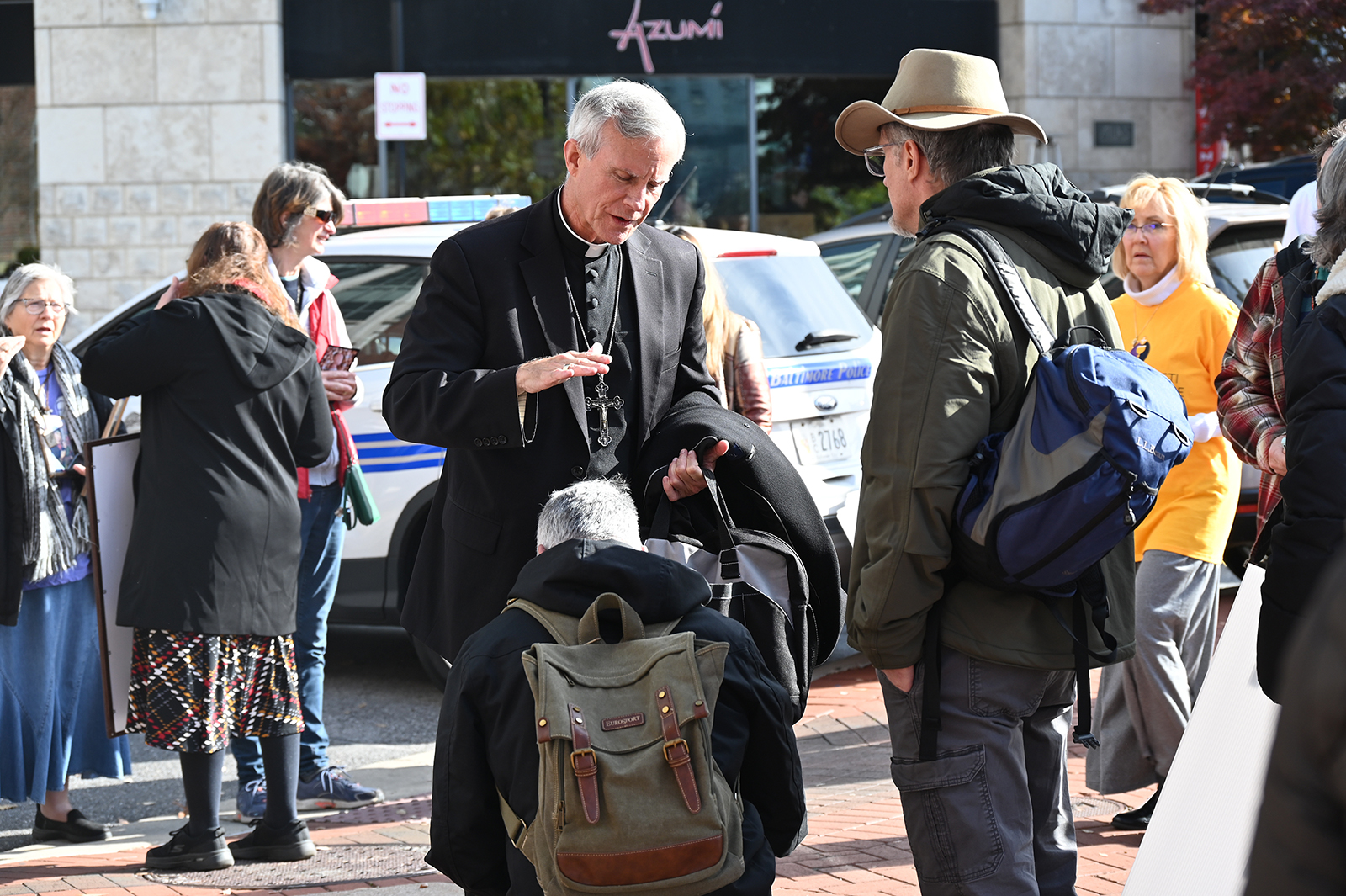
Bishop Joseph Strickland prays over an individual near the United States Conference of Catholic Bishops meeting in Baltimore, Nov. 15, 2023. (RNS photo/Jack Jenkins)
What about Strickland? His statements attacking the pope and his policies are in the public domain, as is his support of Archbishop Carlo Maria Viganò, who wrote a manifesto attacking the pope.
Before Strickland’s removal, he and his diocese underwent an apostolic visitation or investigation by Bishop Dennis Sullivan of Camden, New Jersey, and Bishop Emeritus Gerald Kicanas, the retired bishop of Tucson, Arizona.
Texas Cardinal Daniel DiNardo, no liberal, noted that the two bishops “conducted an exhaustive inquiry into all aspects of the governance and leadership of the diocese.” They found that “the continuation in office of Bishop Strickland was not feasible,” according to DiNardo. Still, Strickland refused to resign and had to be removed.
Although the canonical grounds for removing Strickland were laid out by Bishop Juan Ignacio Arrieta, secretary of the Vatican Department for Legislative Texts, questions remain. Sadly, the visitors’ report was not made public so everyone could see the grounds for thinking that Strickland had to go.
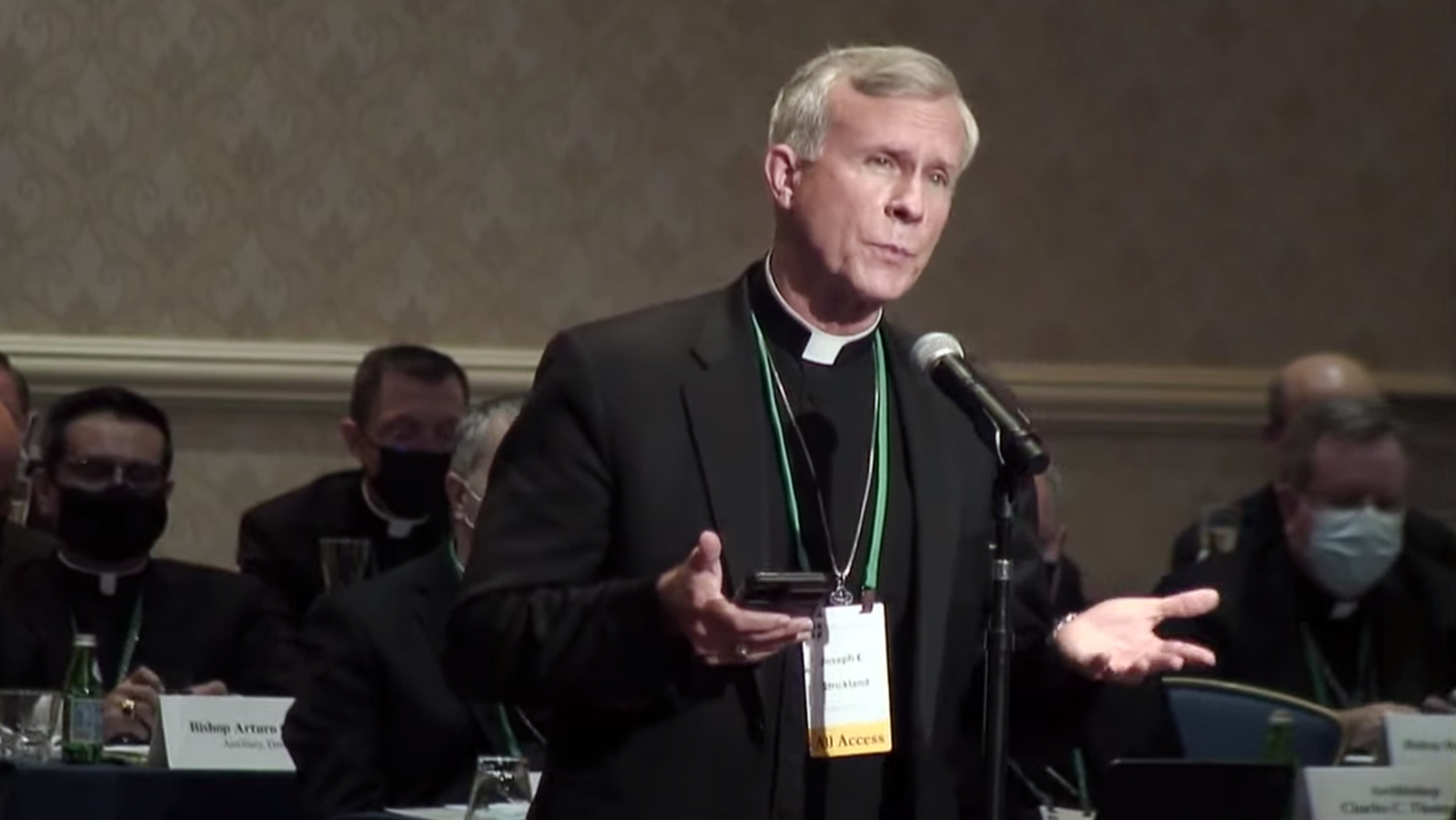
Bishop Joseph Strickland speaks during the fall General Assembly meeting of the United States Conference of Catholic Bishops, Nov. 17, 2021, in Baltimore. (Video screen grab)
Strickland stands out among the bishops for his public and outrageous attacks on the pope. No other diocesan bishop ever attacked Francis, let alone John Paul or Benedict, with such disrespect.
One wishes for another solution. Strickland could have apologized, taken down his tweets or voiced his criticism more respectfully within the episcopal club. He could have simply focused on the needs of his diocese, but he did not. He felt so strongly about his views that he continued to speak out.
It is significant that neither the priests of his diocese nor the bishops of Texas came to his defense. He showed himself to be an outlier who was happy to play the martyr. He was a lone ranger with no support outside the conservative reactionaries in the church. He broke communion with the pope. His removal simply acknowledged that.
The case of Burke is very different. The pope is rightly able to fire any official of the Roman Curia who is not on board with his policies. To think otherwise is to view curial officials as princes and nobles rather than civil servants who work for the pope.
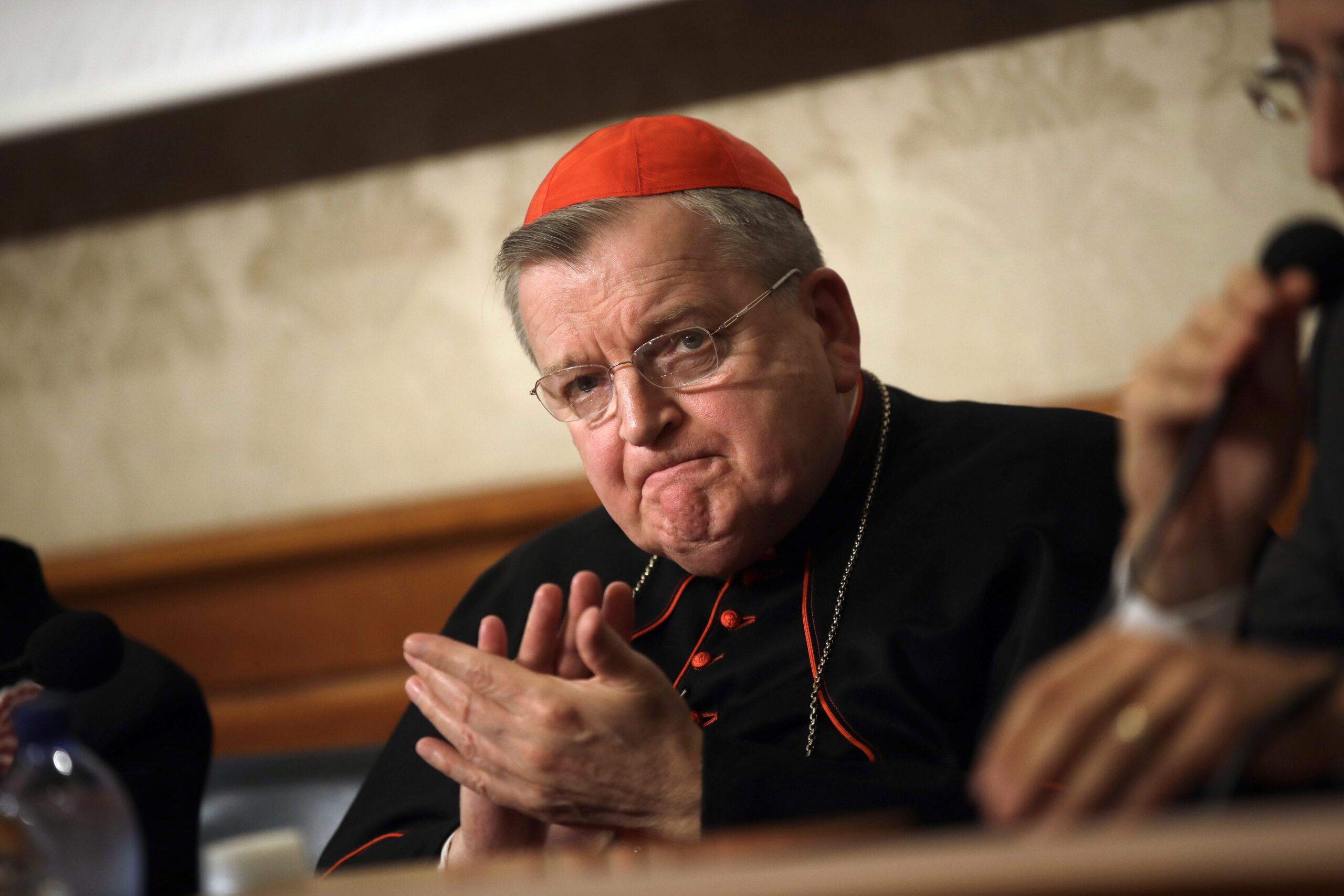
In this Sept. 6, 2018, file photo, Cardinal Raymond Burke applauds during a news conference at the Italian Senate, in Rome. (AP Photo/Alessandra Tarantino, File)
I would have said the same thing under John Paul and Benedict. Benedict had a perfect right to remove Cardinal Joseph Tobin from the Curia after Tobin defended activist Catholic nuns against Vatican scrutiny, and to reassign then-Archbishop Michael Fitzgerald from Rome to Cairo. I disagree with the decisions but I defend the pope’s right to decide who should work in the curia.
The Vatican is a bureaucracy, not a court. As the Synod on Synodality suggested, it would be better if Vatican bureaucrats were not bishops and cardinals. This would not only open positions for laypersons but also make it easier to change top officials who are not working out. If they were not bishops, the pope would not have to find another position for them when they are removed.
Note that Francis did not remove Burke from the College of Cardinals. Until he turns 80, Burke will still have the right to vote in a papal conclave. Nor will he starve. A retired or fired Vatican official does not have a right to stay in Rome, especially if he is causing trouble. He has a human right to retirement benefits commensurate with his former position, but that is it.
One of my complaints about Francis is that he did not replace more Vatican officials sooner and that he kept making top Vatican officials bishops and cardinals.
In short, the case for removing Burke, a Vatican official, is simple. The case for firing Strickland is more complicated. Removing a diocesan bishop should remain a rare exception in the church.
